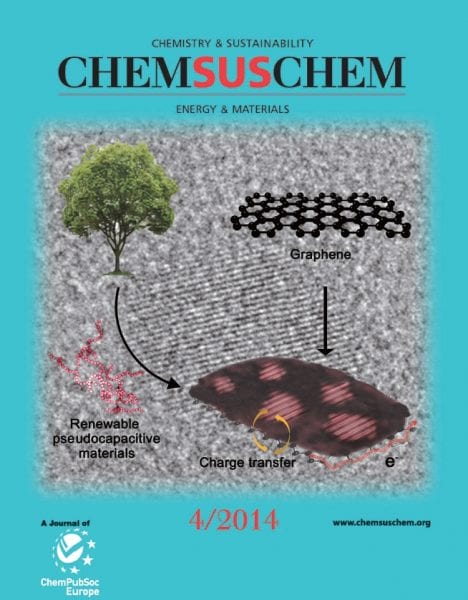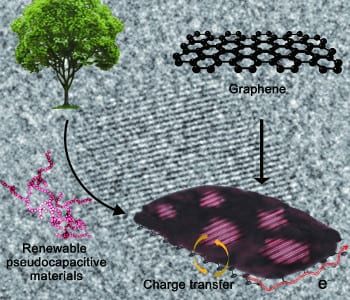How will we store energy in the future? A battle is brewing between supercapacitors and batteries. Lithium-ion batteries store energy electrochemically and, during charging and discharging, the lithium ions must travel backwards and forwards between the electrodes. This takes time and also leads to degradation in the battery materials. Supercapacitors, on the other hand, store energy through non-faradaic means (no chemical reactions are involved). Energy is stored electrostatically by the separation of charge at the electrochemical double layer at the interface between the surface of the electrode and the electrolyte. This type of supercapacitor can be charged extremely quickly as no movement of ions is required and can last for millions of charge/discharge cycles. As a result, they have a much greater power density (rate of energy transfer per unit volume) than batteries. However, the overall energy density (energy per unit volume) is much lower than for batteries.
Pseudocapacitors are another type of supercapacitor that can improve capacitance. They store energy faradaically, through a redox transfer at the electrode surface. However, their performance can suffer from low electrical conductivity and mechanical stabilities. Hybridization of pseudocapacitors derived from renewable materials with electrochemical double layer capacitors may result in an improved supercapacitor.
In a new article in ChemSusChem, Ho Seok Park and co-workers at Kyung Hee University create a renewable hybrid electrode consisting of lignin nanocrystals confined on reduced graphene oxide (RGO). This concept could be applied for energy storage materials with both high energy and power and is featured on the back cover of this month’s issue. The highly electron-conducting RGO (the electochemical double layer capacitor) interacts strongly with the electroactive lignin crystals (the pseudocapacitor) for a fast redox transfer.
Thanks to this synergy, the pseudocapacitors showed remarkable rate and cyclic performance (96% retention of performance after 3000 cycles). This work should help in the design of advanced energy storage alternatives to conventional batteries.

















